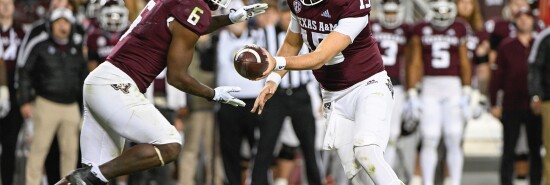
College football schools aren’t playing by the same rules
Conn Carroll
Video Embed
It might be unfair to say the Texas A&M Aggies are cheating, but they definitely are not playing by the same rules as every other college football program.
The NCAA’s name, image, and likeness, or NIL, rule may be almost 2 years old, but every school seems to have its own system for getting money to players.
For decades, college athletes at elite schools (elite athletically, not academically) have been fighting in court, in Congress, and in the media for a larger share of college athletic revenue. After a series of setbacks in state capitols, the NCAA issued a rule in July 2021 allowing college athletes to take payments from virtually anyone in exchange for an endorsement by the athlete. Think Michael Jordan getting paid millions by Nike in addition to the money paid to him by the Chicago Bulls.
But while Nike is just trying to sell shoes, schools are trying to win championships, and that requires coordinating payments to dozens of athletes at the same time. And the NCAA rule, as it exists today, is clear: These NIL payments can not come from the schools directly.
Most schools have turned to what are commonly called “collectives,” which are usually private third-party entities that raise money from a school’s college football fan base and then pay players out of that money raised.
Athletes must offer something of value in return for these payments, and that something varies widely by school and athlete. Some athletes will post a monthly endorsement on social media, others do autograph signings, and others do Zoom calls with donors.
The going rate for football players at the nation’s biggest schools is about $10,000-$50,000 annually, with maybe five or so star athletes at each school getting more than $100,000, according to Ross Dellenger.
The twist for Texas A&M is a new state law that allows the school’s existing nonprofit fundraising entities to raise money specifically for NIL payments and then make those payments to players. Texas A&M’s 12th Man Foundation has been raising money for scholarships and athletic facilities for decades, and it recently announced a “Plus Fund” spinoff that will collect money from donors for NIL deals and then organize those funds into NIL payments to players.
The nonprofit purpose of the Plus Fund will be to promote the 12th Man Foundation. It would be like the Chicago Bulls trying to get around the NBA salary cap by forming a third organization that would pay Michael Jordan to promote the Chicago Bulls.
CLICK HERE TO READ MORE FROM THE WASHINGTON EXAMINER
“They are using it to get a tax write-off to pay student-athletes,” attorney Arthur Bryant told Dellenger. “Unless you are OK with money laundering, you can’t pay athletes $20,000-$30,000 a year through a nonprofit.”
The Texas A&M program seems like a pretty clear breach of NCAA rules. But the NCAA hasn’t tried enforcing its rules yet. You can bet every other school with a big football program is going to be paying very close attention if it does.
